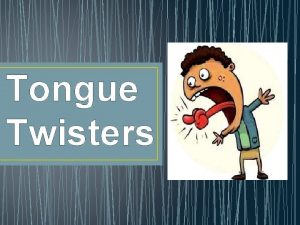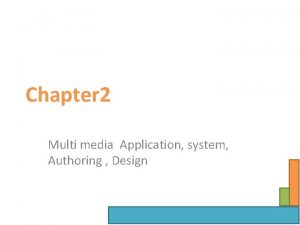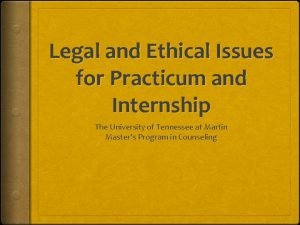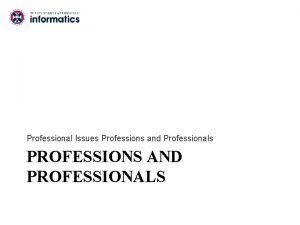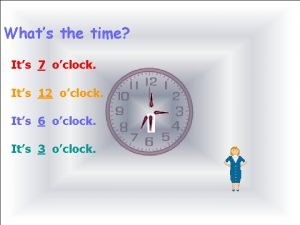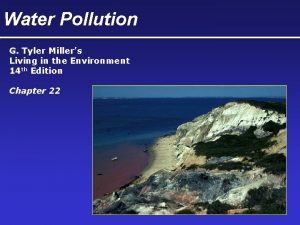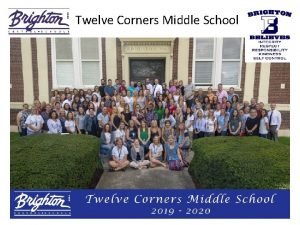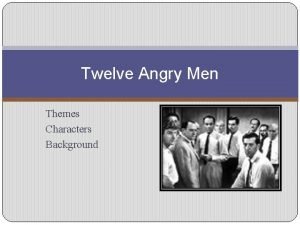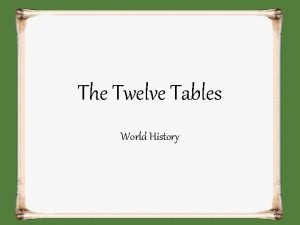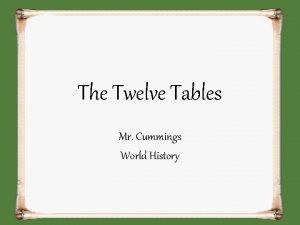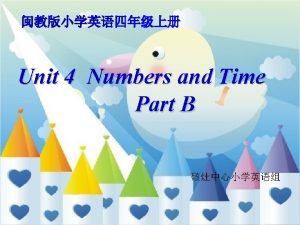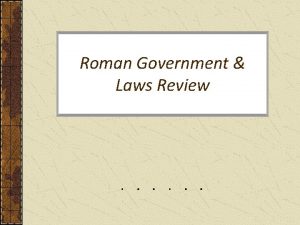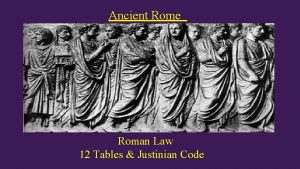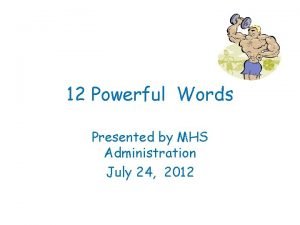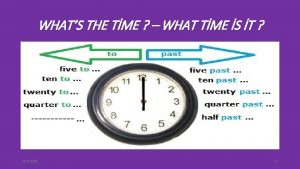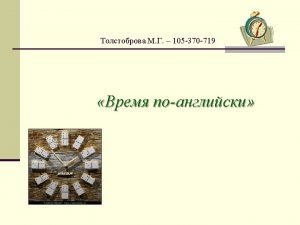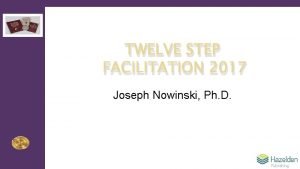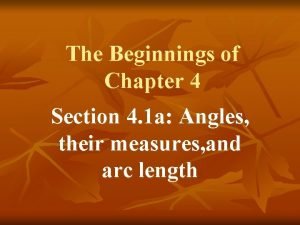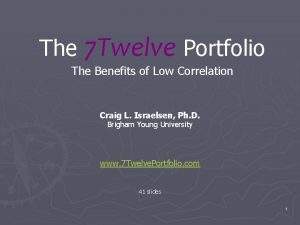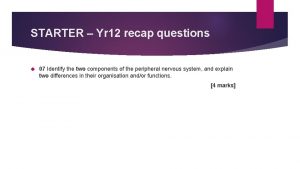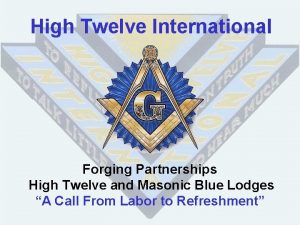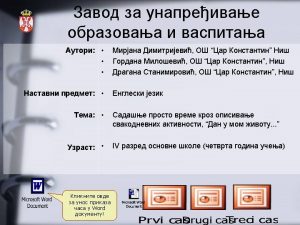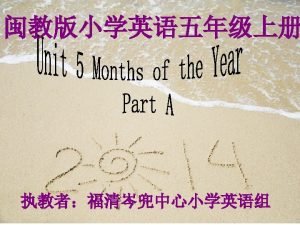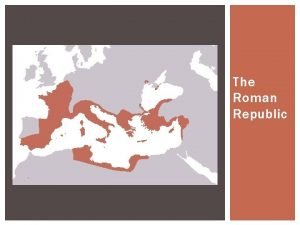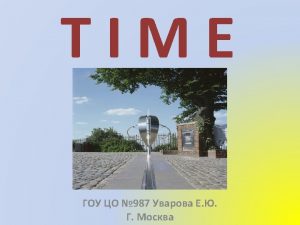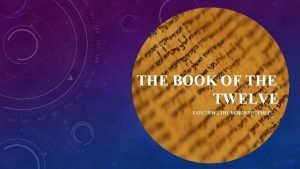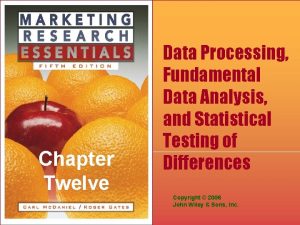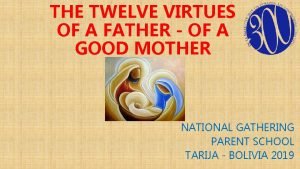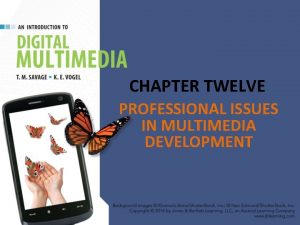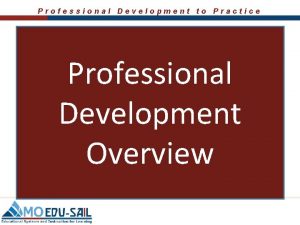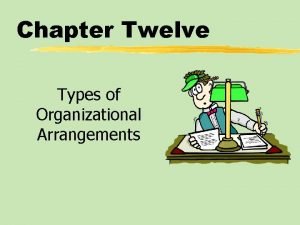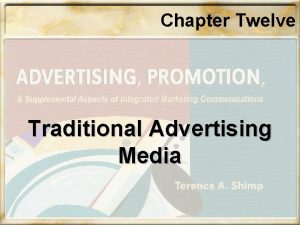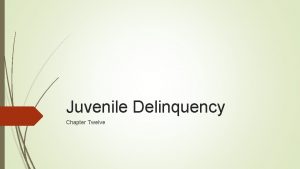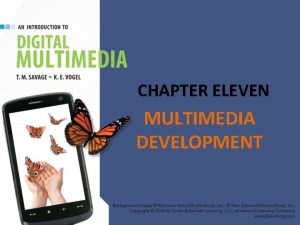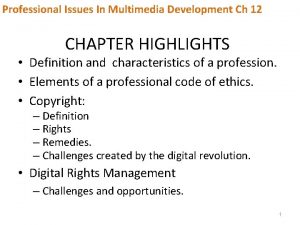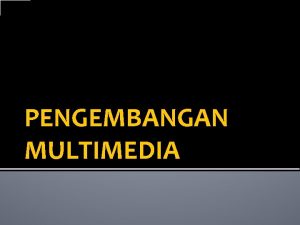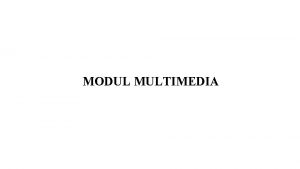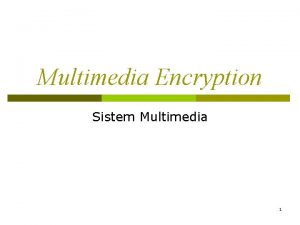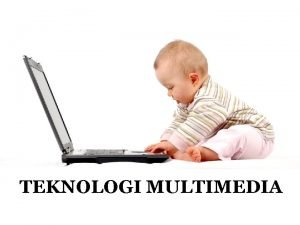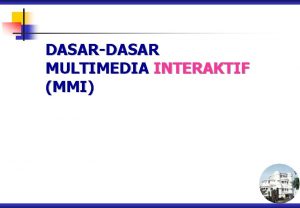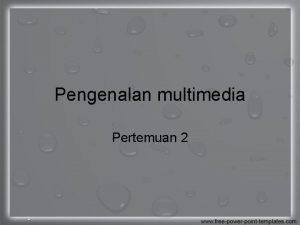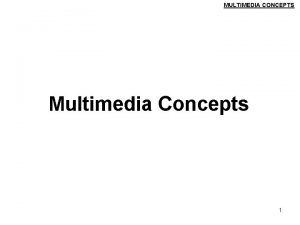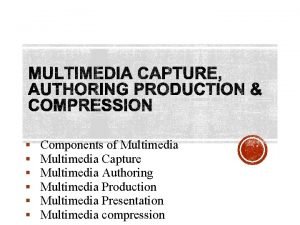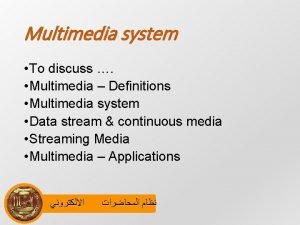CHAPTER TWELVE PROFESSIONAL ISSUES IN MULTIMEDIA DEVELOPMENT CHAPTER





































- Slides: 37

CHAPTER TWELVE PROFESSIONAL ISSUES IN MULTIMEDIA DEVELOPMENT

CHAPTER HIGHLIGHTS • Definition and characteristics of a profession. • Elements of a professional code of ethics. • Copyright: – Definition – Rights – Remedies. – Challenges created by the digital revolution. • Digital Rights Management – Challenges and opportunities. 2

CHARACTERISTICS OF A PROFESSION • An occupation that requires specialized training or education. – Preparation often involves an accredited program of study. – Continuing education is important to remain proficient in the field. • Professional associations formulate codes of ethics for their members. – Professionals have obligations to individuals they serve and society at large. 3

CHARACTERISTICS OF A PROFESSION • Professional associations have active role in promoting and enforcing obligations of the members. • Professions are autonomous and self regulating. 4

MULTIMEDIA DEVELOPMENT • Shares defining properties of a profession. – Requires specialized knowledge and continuing education in latest techniques. – Members of the team often belong to professional organizations. – Educational standards are developing in college and university programs as the field matures. – The work of a developer may have significant social consequences. 5

PROFESSIONAL RESPONSIBILITY • Code of ethics is a statement of obligations and standards that define a practitioner's professional responsibilities. • No direct code of ethics for multimedia developers yet, but the Software Engineering Code of Ethics and Professional Practice directly relates to the work of a multimedia programmer and offers guidance to other members of the team. 6

SOFTWARE ENGINEERING CODE OF ETHICS • Organized as eight principles with a set of specific obligations. – Specific obligations identify course of action to fulfill the principle's major obligation. • Principles suggest obligations in several different areas: – Society at large – Laws that govern practice – Clients and employers – Colleagues and subordinates – Profession itself. 7

GENERAL PRINCIPLES ACM/IEEE CODE OF ETHICS • The "Public" Principle: "Software engineers shall act consistently with the public interest. " • The "Client and Employer" Principle: "Software engineers shall act in a manner that is in the best interests of their client and employer, consistent with the public interest. " • The "Product" Principle: "Software engineers shall ensure that their products and related modifications meet the highest professional standards possible. " 8

GENERAL PRINCIPLES ACM/IEEE CODE OF ETHICS • The "Judgment" Principle: "Software engineers shall maintain integrity and independence in their professional judgment. " • The "Management" Principle: "Software engineering managers and leaders shall subscribe to and promote an ethical approach to the management of software development and maintenance. " • The "Profession" Principle: "Software engineers shall advance the integrity and reputation of the profession consistent with the public interest. " 9

GENERAL PRINCIPLES ACM/IEEE CODE OF ETHICS • The "Colleagues" Principle: "Software engineers shall be fair to and supportive of their colleagues. " • The "Self" Principle: "Software engineers shall participate in lifelong learning regarding the practice of their profession and shall promote an ethical approach to the practice of the profession. " Complete ACM/IEEE Code is in the appendix section. 10

THE COPYRIGHT TRADITION – RIGHTS – REMEDIES – EXCEPTIONS 11

DEVELOPERS AND COPYRIGHT. • Reasons multimedia developers need to understand the copyright laws. – They must guard against intentional or unintentional violation of the rights of others. – Developers must protect their own work. – Developers must frame agreements with the client to specify copyright ownership. Larry Lessig on Laws that Choke Creativity. TED 2007 talk 12

COPYRIGHT PROTECTION • Copyright is a form of legal protection given to creators of "original works of authorship. " – Purpose of copyright protection is cultural advancement. • Copyright differs from patent protection. – Copyright applies to original or creative expression. – Patent protects original inventions. 13

COPYRIGHT PROTECTION • U. S. law protects any form of original expression that is in fixed form. – Work does not need to be registered. – Notice of copyright protection is not necessary. • "Works of original authorship" combined with automatic coverage of works in fixed form (including computer programs) means any content created by another party is potentially covered by copyright. 14

COPYRIGHT PROTECTIONS • Owner of a copyright has five major rights: – To reproduce the copyrighted work. – To produce derivative works. – To distribute copies to the public. – To perform the work publicly. – To display the work publicly. • Owner retains these rights unless specifically transferred to another party. 15

COPYRIGHT PROTECTIONS • Protection is granted for set period of time. – Works created after 1978 extend to life of creator + 70 yrs. – Corporate rights extend 95 yrs. from date of publication or 120 years from creation, whichever comes first. • Copyright registration is required if: – Lawsuits are being filed for infringement. – Statutory damages and attorneys' fees are involved. 16

COPYRIGHT REGISTRATION • Registration: – Provides evidence of copyright claim. – Establishes basis for legal enforcement. – Recommended in multimedia development. • Infringement can lead to: – Injunctions to prohibit further production and distribution. – Compensation for monetary damages. – Statutory damages and criminal sanctions. Register copyright @ www. copyright. gov 17

COPYRIGHT EXCEPTIONS • Public Domain – Works for which copyright has expired. – Works where it was never applied such as: • Government documents • Works not in fixed form. • Fair Use – A doctrine intended to advance important social goals. • Free and open press • Education • Research and scholarship. Conditions of Fair Use described in section 107 of U. S. Copyright Act. 18

FAIR USE CRITERIA • Four criteria used to determine fair use: – – Purpose and character of the use. Nature of the copyrighted work. Amount and significance of the portion used. Effect of the use on the value of the work. • Fair use is likely to be found for uses that: – – Are non-profit. Are factual rather than creative. Use small amounts of the work. Have little or no effect on the value or potential market of the work. 19

WORKS FOR HIRE • Works that are produced under specific direction of an employer and with the employer's resources. – Employer may own the copyright for works for hire. – Written agreements detailing copyright ownership should be established by employer and employee. 20

COPYRIGHT AND DIGITAL MEDIA • Copyright law was developed in age of analog media. – Media was more difficult to copy and distribute in analog form. • Digital versions of media pose challenges to traditional protections. – Easy to copy in full fidelity. – Editing tools easily generate derivative works that are difficult to detect. – Public display rights are threatened by Web technologies. 21

COPYRIGHT AND DIGITAL MEDIA • Responses to preserving copyright and digital media: – Strengthen and improve enforcement of existing legal protections. – Develop new strategies within the digital media itself to protect content. • Digital Rights Management – The application of digital technologies to the management of intellectual property (IP). 22

DIGITAL RIGHTS MANAGEMENT • Applied to many forms of intellectual property (IP) including: – Patents – Corporate reports and communications – Creative works traditionally covered by copyright (analog "legacy media") – Original digital media. 23

DIGITAL RIGHTS MANAGEMENT • Contract law also protects creative works. – Owners of creative works can sell a license to use the product. – End User License Agreements (EULAs) are popular for software programs and in use with digital books or "ebooks. " 24

USES OF DRM • DRM has often focused on rights of content owners. • Commonly used to control copying and accessing digital content. – – Adobe "e. Books" Content Scrambling System (CSS) Audio CDs (Sony BMG) Music sold on the Web. • Digital Millennium Copyright Act (DMCA) reinforced DRM copy/access protections. – DMCA also generated controversy. 25

DIGITAL MILLENNIUM COPYRIGHT ACT • DMCA contains provisions that directly affect the work of digital media professionals. – Clarified permitted copying of digital media. – Limited liability of ISPs for copyright infringements by provider's users. – Criminalized the circumvention of DRM controls. – Outlawed the creation and distribution of any technology, service, or device to circumvent the controls. 26

DIGITAL MILLENNIUM COPYRIGHT ACT • The DMCA has generated controversy: – Potential abuse of copyright claims – Limitations on fair use – Discouragement of research – Stifling of creative expression. 27

Two Generations of DRM • First Generation: a “prevent and protect” strategy intended to limit access to, and use of, digital media. • Second Generation: a “respect and promote” strategy to facilitate legal distribution and use of digital media. 28

Second Generation DRM • Elements include (Iannella 2001; Van Tassel 2006): • • • Rights description, validation, and record keeping Media access Trading Implementing/monitoring rights usage Tracking. 29

DRM and Digital Watermarks • Digital watermarks - alterations to a media file that encode information about the file. For instance: – Copyright ownership – Identity of creator – Identity of purchasers of copyright. • Used to enforce copyright but also may support broader goals of “Second Generation” DRM. 30

Benefits of Second Generation DRM • New compensation models for creators of media (Magnatune) • New methods of distribution (Weed) • Less expensive, more efficient access to copyright permissions • More flexible permission and licensing options. 31

Promoting Second Generation DRM • Creative Commons: – Promotes sharing of creative works through webbased licensing program. • Six types of licenses • Owners select terms of use they prefer. – Goals: • Share knowledge and creativity with the world • Encourage creation of a common digital culture where creative works are readily available for use by others. Learn more @: http: //creativecommons. org/ 32

Promoting Second Generation DRM • Open Source Initiative: – A standards body to promote development, distribution, and maintenance of open source software. – Three key features: • Free redistribution of software. • Access to the source code for modification. • Ability to create derivative works , i. e. develop other software based on the original source code. – Open Source applications are free to download and use. See www. opensource. org 33

The Age of Collaborative Creativity • New thinking on creativity from users and consumers. – TED 2005 talk by Charles Leadbeater. The Era of Open Innovation. – TED 2005 talk by Howare Rheingold. The New power of Collaboration. • Steal this Film: movie on decentralization of media production. Can be found on You. Tube. 34

WRAP UP • Professions and Professional responsibility. • Codes of Ethics and multimedia developers. • Protecting intellectual property with: – Copyright law. – Patents. 35

WRAP UP • Exceptions to Copyright Protection – Public Domain – Fair Use – Works for Hire. • Challenges to copyright protection from digital media. – Digital Millennium Copyright Act (DMCA) • Digital Rights Management – Challenges – Opportunities. 36

KEY TERM CHECK UP 37
 Whether the weather tongue twister
Whether the weather tongue twister Multimedia application design
Multimedia application design Multimedia becomes interactive multimedia when
Multimedia becomes interactive multimedia when What is the meaning of table of content
What is the meaning of table of content Chapter 1 introduction to multimedia
Chapter 1 introduction to multimedia Esa multimedia.esa.int./multimedia/virtual-tour-iss
Esa multimedia.esa.int./multimedia/virtual-tour-iss Legal ethical and societal issues in media and information
Legal ethical and societal issues in media and information Ethical and legal issues involved in practicum
Ethical and legal issues involved in practicum What are professional issues
What are professional issues Ethical issues in information systems
Ethical issues in information systems The 7
The 7 What are the terrible twelve water pollution
What are the terrible twelve water pollution Tcms school
Tcms school Themes in 12 angry men
Themes in 12 angry men 12 tables definition
12 tables definition Twelve tables
Twelve tables 12 principles of green chemistry with examples
12 principles of green chemistry with examples One two three four five six numbers
One two three four five six numbers Roman twelve tables laws
Roman twelve tables laws Lesson twelve saving and investing
Lesson twelve saving and investing Code of justinian
Code of justinian 12 most powerful words
12 most powerful words It's quarter to twelve
It's quarter to twelve Quarter past twelve
Quarter past twelve The twelve step facilitation handbook
The twelve step facilitation handbook It takes ten identical pieces to form
It takes ten identical pieces to form Seven twelve portfolio
Seven twelve portfolio Josie is twelve last year
Josie is twelve last year High twelve international
High twelve international At half-past six
At half-past six There are twelve months in a year
There are twelve months in a year What was the main idea of the twelve tables?
What was the main idea of the twelve tables? It's twenty-five to ten
It's twenty-five to ten Book of the twelve
Book of the twelve Octagonal prism faces edges vertices
Octagonal prism faces edges vertices Fundamental data analysis
Fundamental data analysis The twelve virtues
The twelve virtues Twelve olympians symbols
Twelve olympians symbols
